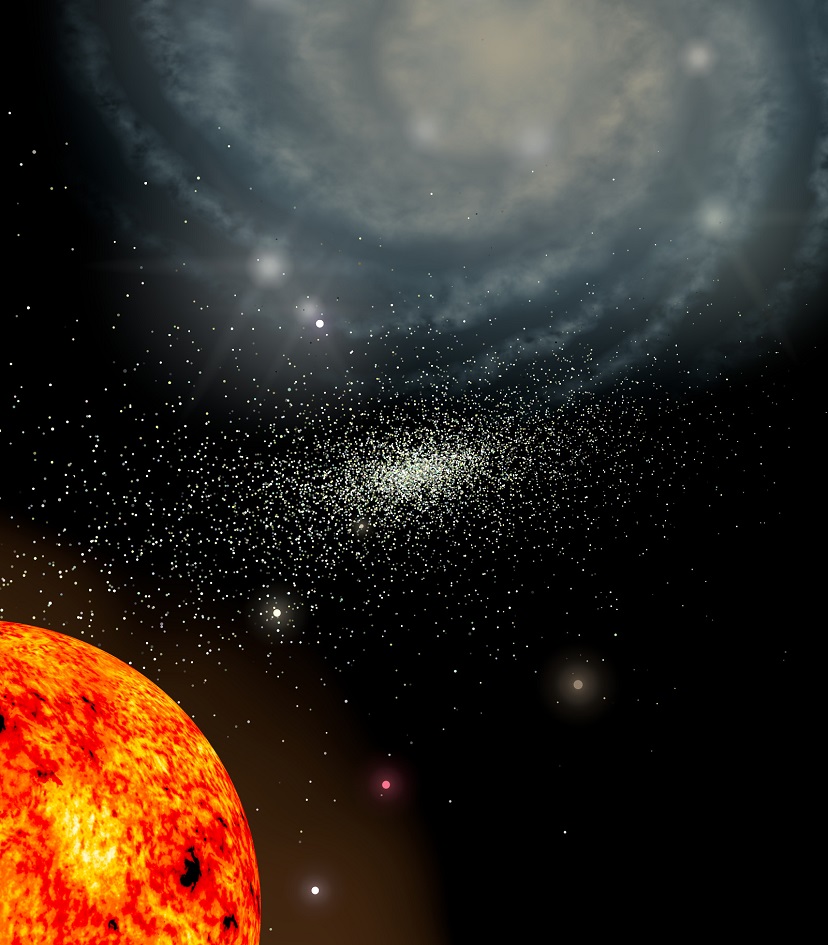
A team of astronomers that includes Ting Li and Alexander Ji of the Carnegie Observatories in Pasadena has discovered a stellar stream composed of the remnants of an ancient globular cluster that was torn apart by the Milky Way’s gravity 2 billion years ago, when Earth’s most-complex lifeforms were single-celled organisms.
The finding, published in the magazine Nature, upends conventional wisdom about how these celestial objects form, according to a statement issued July 29 by Carnegie Observatories.
A globular cluster is a sphere made up of as many as a million stars bound by gravity and orbiting a galactic core. The Milky Way is home to about 150 of them, which form a tenuous halo that envelops our galaxy.
But the globular cluster that spawned this newly discovered stellar stream had a lifecycle that was very different from the globular clusters we see today.
“This is stellar archaeology, uncovering the remnants of something ancient, swept along in a more-recent phenomenon,” explained Ji.
In this study, the collaborative focused on a stream of stars in the Phoenix constellation.
“The globular cluster remnants that make up the Phoenix Stream were disrupted many years ago, but luckily retain the memory of its formation in the very early universe, which we can read from the chemical composition of its stars,” said Li.
Led by Li, the initiative aims to map the motion and chemistry of stellar streams in the Southern Hemisphere, according to the Carnegie press release.
This study was part of the Southern Stellar Streams Spectroscopic Survey, S5 for short, an international collaboration using the 2dF/AAOmega instrument on the Anglo-Australian Telescope at Coonabarabran, NSW, to survey streams of stars uncovered during the Dark Energy Survey (DES).
Ji and Li are both Hubble fellows. Li is also a Carnegie-Princeton fellow.
The team measured the abundances of heavier elements — what astronomers call a star’s metallicity. A star’s makeup mirrors that of the cloud of galactic gas from which it is born. The more prior generations of stars have seeded this material with heavy elements that they produced during their lifetimes, the more enriched, or metallic, the stars are said to be. Therefore, a very ancient, primitive star, will have almost no heavy elements.
“We were really surprised to find that the Phoenix Stream is distinctly different to all of the other globular clusters in the Milky Way,” explained lead author Zhen Wan of the University of Sydney. “Even though the cluster was destroyed billions of years ago, we can still tell it formed in the early universe.”
Because other known globular clusters are enriched by the presence of heavy elements forged by stellar earlier generations, it was theorized that there was a minimum abundance of heavier elements required for a globular cluster to form.
But the Phoenix Stream progenitor is well below this predicted minimum metallicity, posing a significant problem for previous ideas about how globular clusters are born.
“One possible explanation is that the Phoenix Stream represents the last of its kind, the remnant of a population of globular clusters that was born in radically different environments to those we see today,” Li said.
The researchers proposed that these no-longer-with-us globular clusters were steadily depleted by the Milky Way’s gravitational forces, which tore them to pieces. The remnants of other ancient globular clusters may also live on as faint streams that can still be discovered before they dissipate over time.
“There is plenty of theoretical work left to do, and there are now many new questions for us to explore about how galaxies and globular clusters form,” said co-author Geraint Lewis, also of the University of Sydney.
Carnegie Observatories is headquartered at 813 Santa Barbara Street in Pasadena.














 0 comments
0 comments


